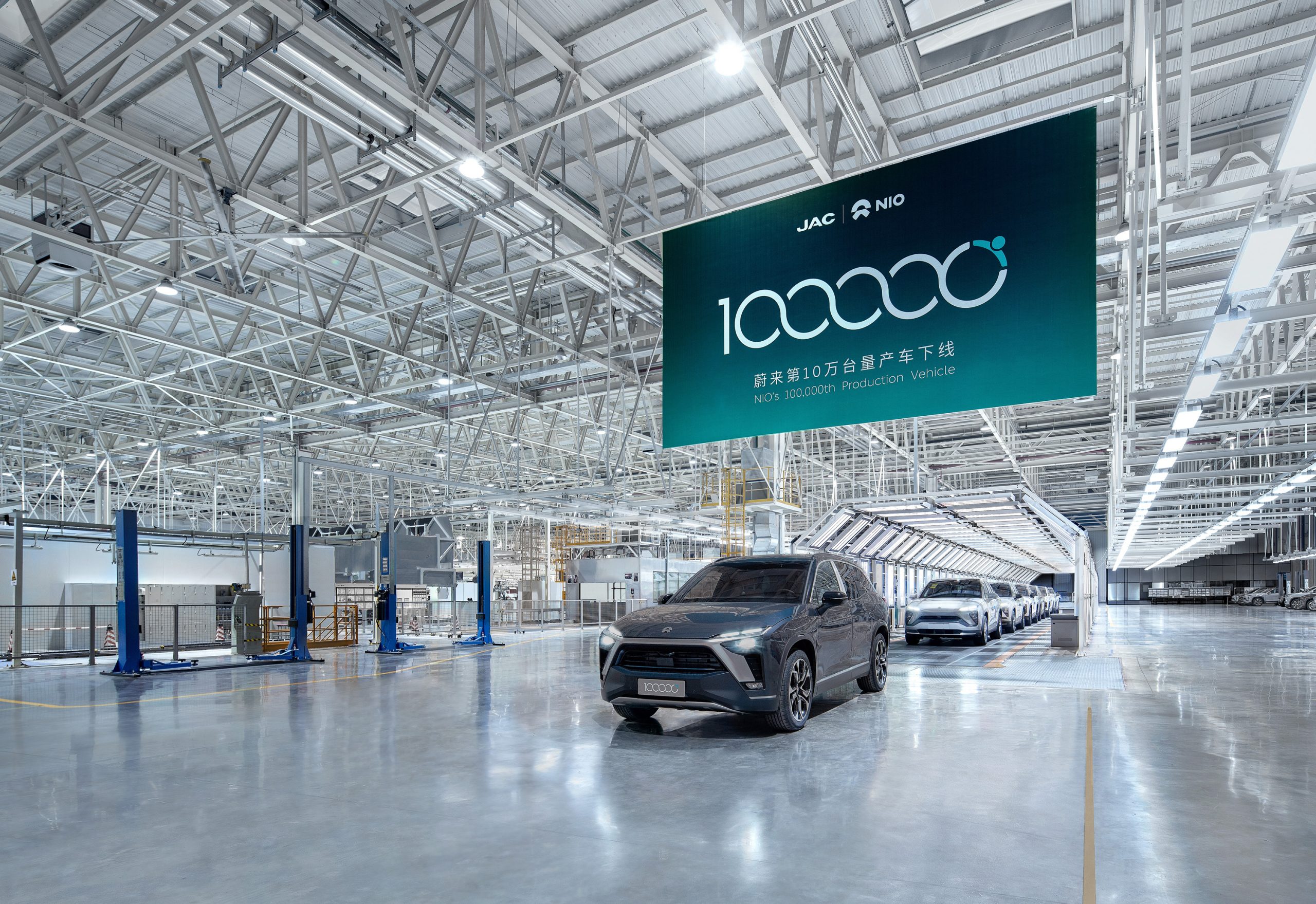On April 7th, NIO held a ceremony in Hefei for the production of 100,000 vehicles. Li Bin and Qin Lihong accepted a media interview, and the summary of the interview is as follows:
Q1: What is your opinion on so many companies making cars now? How do you think the sub-market will develop in the next 5-10 years?
Li Bin: In 2018, everyone said that NIO doesn’t even have its own factory and that it is planning to sell cars so expensively while cooperating with Jianghuai. If you ask ten people, maybe nine of them will think it’s not reliable. Today, after more than 1,000 days, in less than three years, we have delivered 100,000 vehicles with an average selling price of over 420,000 yuan, and we have answered a lot of questions.
If we could go back to 2018, this is not only an achievement of NIO, but also an achievement of our entire automotive industry and innovative companies. Before us, there may have been no brand with a Chinese background that dared to position a car like this. Now this position means that the technology and services capabilities need to be matched. Our products and services have been recognized by customers, including our quality and innovation capabilities. We are pleased that our innovative model is being learned by more and more competitors.
Although 100,000 vehicles are worth celebrating, this achievement is still a small number compared to traditional oil cars. Other companies like BMW might sell 100,000 vehicles in just one and a half months. Compared to oil cars, our EV is still at an early stage. We are willing to summarize when we reach one million vehicles.
We actually welcome more companies, including Apple, Huawei, and Xiaomi, and all technology companies to join the wave of car manufacturing. It is a good thing to promote the development of the intelligent electric vehicle industry and accelerate the transition from gasoline to electric vehicles. But in the end, it still depends on products and services. We will remain firmly committed to continuous investment in R&D and service facilities in the next few years to improve ourselves. At the same time, we welcome more competitors.
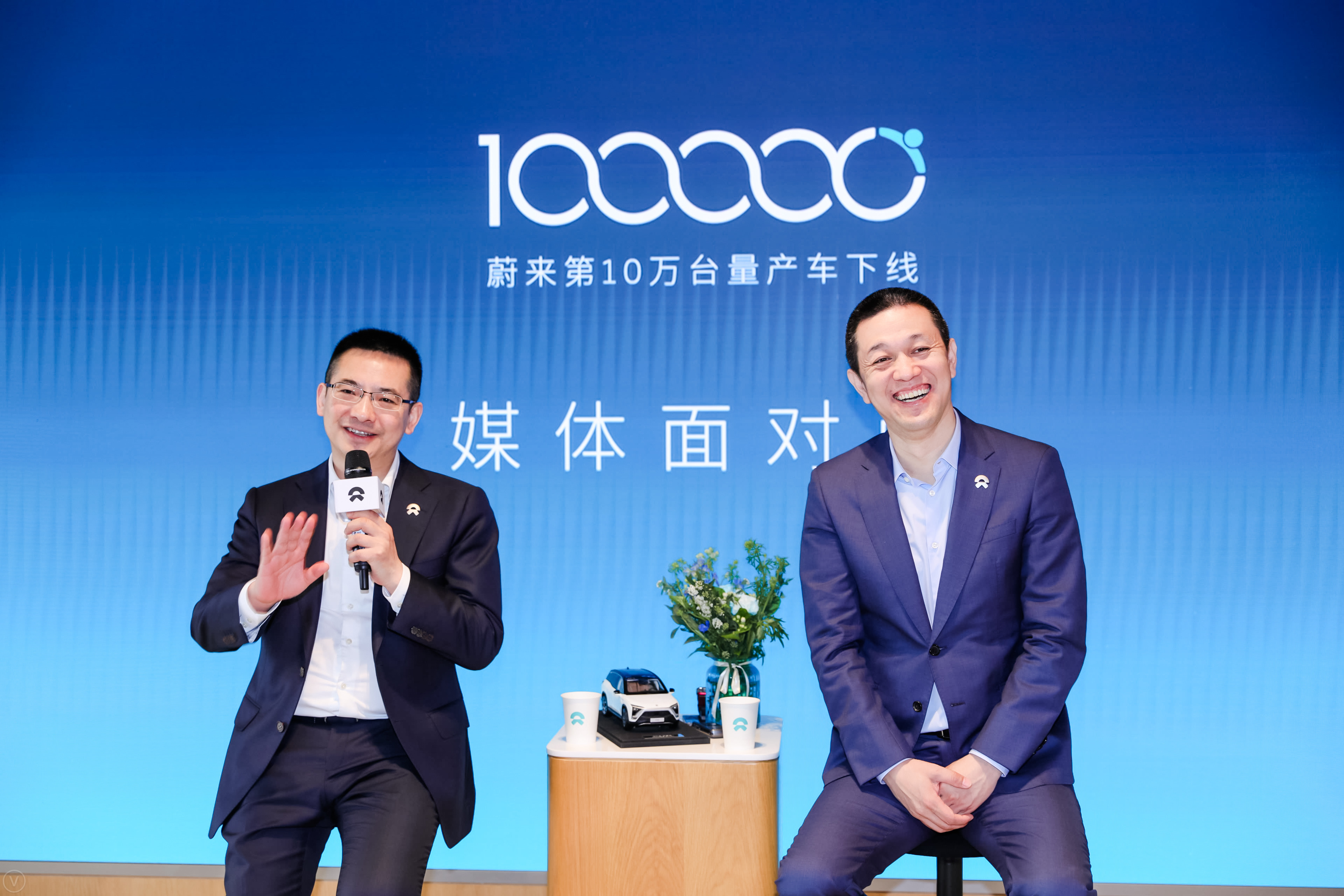
Q2: After surpassing 100,000 vehicles, what are NIO’s goals for advancing in the new energy market and continuing to leverage the high-end new energy market?
Li Bin: Our company has always had a goal of becoming the most satisfactory company and brand for users, and we are still far from this goal. The number 100,000 is not what we pursue. We believe that more and more users will choose NIO. We just passed 20,000 vehicles in the first quarter of this year. If NIO sold 10,000 cars in the first year, 20,000 in the second year, and 40,000 in the third year, we would maintain 100% growth. This is actually something we should affirm from this perspective.
Q3: What do you think is the biggest challenge and uncertainty this year? What improvements have been made in process management since the establishment of the Jianglai joint venture, and what is the original intention and purpose?
(Note:The Mandarin text of this question is incomplete and ambiguous, so we cannot provide a professional translation without further clarity.)# Li Bin:
We have just resumed work in the factory. We stopped for 5 working days recently and took this opportunity to remodel our production line without any delay. The whole industry is facing the challenge of chip shortage. Actually, sometimes chips are very cheap, but they directly affect our supply chain and production capacity. In the first quarter, it has affected about 15%, which means we delivered 15% fewer cars, about 10,000 units. In the short term, the shortage of chip supply is a big challenge, and it is not just our problem, but the industry’s problem. Comparatively speaking, we are less affected, but it will have a big impact on companies that have larger production volumes.
For the mid-term challenge, we cannot guarantee to maintain the leading advancement in the performance of our products, especially in the aspect of intelligent electric vehicles related to autonomous driving. Whether the technology of batteries can maintain the fluidity of products is the ultimate challenge. The final product form of automobiles will be formed in 3-5 years. Whether the products we defined are correct, and whether the technological products will be the mainstream technology roadmap in the future, it can only be seen after three years of consideration and judgment, or even five years, and the pressure is still very high.
Just like battery swapping, we are still studying it. We started the research in 2015, and it took about five years to figure it out. Including the consideration since 2012, it took a total of 8 years. Automobiles are such a product that needs to be constantly improved in the long term. It’s like a marathon on a muddy road.
Our long-term challenge has always been service. Automobiles are products that heavily rely on services. The environment in which the car is used and the environment of mobile phones and other things are quite different. Whether the services can satisfy customers is a long-term challenge. Because we have more and more users, more and more scenarios, and more and more colleagues. How to provide high-quality services in complex environments and more user scenarios is always our long-term challenge and pressure.
Qin Lihong:
Not long ago, we set up a joint venture with JAC Motors called Jianglai. The advanced manufacturing base where we are located today is a very innovative cooperation model between JAC Motors and NIO in the automobile industry. We think that the innovation of this cooperation model is no less than many other innovations, and it is also one of the major innovations in the Chinese automobile industry.
Jianglai is using a new mechanism to consolidate the cooperation of manufacturing services and supply chain management, and has greater imagination for future improvement. The new company has new mechanisms for quality assurance, production capacity, continuous improvement of manufacturing technology, and continuous development of supply chain. The management team and employees of the new company are more motivated to do these things. There are some rumors that Jianglai is a new brand of NIO, which is not correct. This is just the cooperation model of our factory, which is consolidated with new mechanisms and has greater imagination.
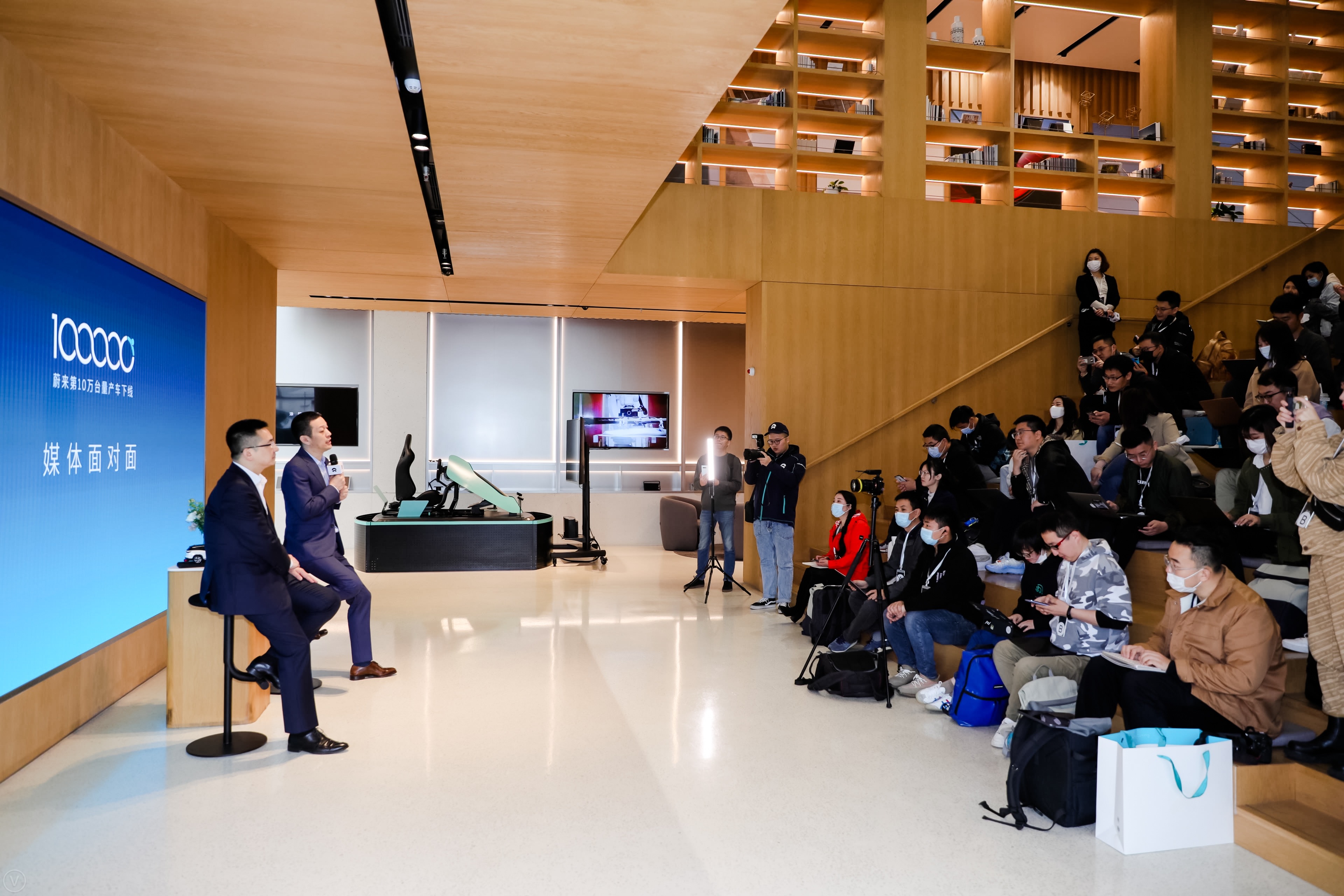 ### Q4: ET7 will be delivered in 2022, which means there will be a new car gap in 2021. How will NIO cope? Will NIO be able to achieve its goal of annual sales of 500,000 vehicles? If so, will there be new sub-brands included?
### Q4: ET7 will be delivered in 2022, which means there will be a new car gap in 2021. How will NIO cope? Will NIO be able to achieve its goal of annual sales of 500,000 vehicles? If so, will there be new sub-brands included?
Li Bin: We unveiled the ET7 on January 9th this year. From a technological point of view, the ET7 is brand new, and many advanced technologies need to be mass-produced six months to a year in advance. This is similar to what we did with EyeQ4 in 2018 when we were eight months to a year ahead of schedule. We are moving forward at a fast pace, but of course, this requires some time. Our goal is to have a complete product once the ET7 hits the market. This is a major challenge, and the mission of next year’s mass production is both arduous and challenging. This month we also have the underbody of the white car coming off the line, and our factory is already hard at work.
We hope that once the ET7 is on the market, it will be a complete product. This is a significant challenge, and this year our software will continue to be upgraded. This is also an advantage of the automotive industry. By upgrading, we can further tap into the potential of the first-generation technology platform, as well as exploring additional space for ongoing iteration and evolution.
This year we will continue to deepen our service network, such as having 500 battery exchange stations by the end of the year. Our internal targets are even more aggressive than this, and we will also release new initiatives, especially for some basic infrastructure of charging station service facilities.
As for the second question, last year’s goal was around 800,000, and reaching 500,000 within three years is achievable. Last year, the high-end market reached approximately 3.5 million units and is still growing. If we make a slightly optimistic forecast, reaching 4 million units, someday we could achieve a 25% market share, which would be 1 million units for us. If we achieve a 30% market share, we would have more than 1.2 million units.
If we look at first-tier cities, such as Shanghai, I can say that we are already the number one in our price range for the ES8, ES6, and EC6 within their respective market segments, surpassing all gasoline vehicles. In over 20 markets such as Shanghai, the EC6 has exceeded the quantity of gasoline vehicles in the same price range. I am still very confident, and we will have more markets.
So, what is the problem now? Just imagine the proportion, as long as gasoline cars are converted to electric cars, and our share can hold at 40% in the high-end smart electric vehicle market, our share will be remarkable. Maintaining a 70-80% share is impossible, so we say that whether we can maintain a 40% share of the high-end intelligent electric vehicle market in China is something that needs to be seen over a more extended period of time.
Qin Lihong: It is incorrect to discuss sales and market share without considering price. This year, I’ve seen many reports comparing Wuling and Tesla, and we still need to talk about relative share and quantity within the same segment market.### Q5: Currently, judging from the pricing, NIO is positioned in the high-end market. At present, there are various car companies in the high-end market, and recently another car company has entered the high-end market. So, how is the high-end market defined and what are its characteristics?
Li Bin: If you think that just setting the price will make the car enter the high-end market, that’s a bit naive. NIO aspires to be in the high-end market, primarily based on very rational thinking, not just for the sake of being high-end.
When we were positioning our brand in 2015, we realized that it was very difficult to enter the mainstream market of more than 100,000 RMB, faced with the cost of intelligence, battery, and other aspects. Because we cannot compete with gasoline vehicles at the same price. Why haven’t there been any popular electric vehicles in the price range of more than 100,000 RMB? One crucial reason is that they cannot compete with gasoline vehicles.
I think there is an opportunity in the price range of over 300,000 RMB. In terms of taxes, there are not only purchase taxes but also consumption taxes, which are matched with the price. The higher-end the car, the higher the consumption tax, up to 40% to 50%, which is crucial. It’s self-deception to talk about this without mentioning it.
We dare to do it, but how to do it? High-end cars must have technological leadership. You must invest excessively in technological research and development to carry out positive research and development. Can high-end cars be copied? Can you sell them at the prices of luxury brands by copying luxury brands? Impossible. To make high-end cars, investment in intelligence and electrification alone is not enough. As a high-end car, the car with the highest technological content, the value of the car itself must justify the price, and it must have advantages compared with traditional cars that are more expensive. We have certainly achieved this. In addition, service and quality also live up to the two words of high-end. High-end is not pricing, but our technological accumulation, our research and development system capabilities. We have ranked first in the quality ranking for two consecutive years, and we can say that our products are flawless in the same class of products.
In addition, there is also word-of-mouth and satisfaction with services. Only when all these factors are achieved can we live up to the positioning of high-end. As for what is luxury, high-end or high-level, cars costing over 100,000 RMB can also be called luxurious. This term is difficult to define. High-level is the same. Cars costing over 100,000 RMB can also be regarded as high-level. High-end is a system, which means that we must achieve high-end in various aspects such as technology, quality, services, and products. This is our idea.
Q6: NIO’s second goal of reaching 50,000 units was achieved in one-third of the time it took for the first goal. What enabled NIO to develop so fast since last year? Are users buying NIO’s products or community? The current order volume is increasing, and if the chip supply can meet the demand, how is NIO’s production capacity? How will NIO plan for the second half of this year, and will it meet consumer expectations?# Qin Lihong:The time spent on the first 50,000 cars was longer than the time spent on the second 50,000 cars, and the first 100,000 cars may take longer than the second 100,000 cars. Our high-end intelligent electric vehicles have an average transaction price of more than 400,000 yuan. First of all, we must know that consumers will never pay for pure emotions. This is a physical product that carries everyone’s way of life, life efficiency, and even the safety of family members. Therefore, it must have a solid foundation and technical core.
In addition, beyond physical needs, the proportion of people’s emotional needs will increase at a certain level. We have also satisfied many important emotional needs of users, such as respect and easy and convenient services. Consumers choose NIO based on their dual needs for physical and emotional factors. The influence of product technology, brand, and community atmosphere is all involved. We must continue to focus on high-end brands and make efforts in these three aspects.
Li Bin: In terms of production capacity, our manufacturing base can now reach a daily output of 400 vehicles. With 25 working days in a month, the monthly output is 10,000 vehicles. Regarding chips, the impact is on the supply chain and directly affects our parts suppliers. Currently, there is also some pressure on battery production capacity. In the second quarter, the monthly production was actually 7,500 vehicles, and there is currently some pressure.
We have already expanded the production line in the north and can achieve an annual output of 300,000 vehicles by the end of this year.
Q7: Previously, it was mentioned that the impact of chips was short-term. What will be the data impact on delivery and other aspects due to pressure on raw materials for batteries? The second issue is about the factory. There are rumors that NIO will open a new factory in Hefei. Is it reliable?
Li Bin: The general consensus in the industry is that the second quarter is difficult, but the third quarter will ease. Actually, the entire semiconductor industry is adding production capacity to the automotive industry, and many are not high-end products, but rather basic ones. We still believe this is short-term pressure, and we think there will be a lot of relief starting from the third quarter. Some pessimistic predictions believe the pressure will continue until next year.
For the battery, the demand for 1,000-mile batteries exceeded our expectations, so we need to increase the production capacity for 1,000-mile batteries, which is expected to be in June or July. There will be significant capacity improvement in the third quarter. For the factory, we will have many new products in the coming years, and one factory cannot support our development plans. On April 29th, on the occasion of the first anniversary of our cooperation agreement with Hefei, we and Hefei will start constructing the intelligent electric vehicle industrial park, which aims to be world-class and integrate research and development, production, manufacturing, and life services. Therefore, the construction work of our production capacity in Hefei will definitely be accelerated, which is also necessary for our development.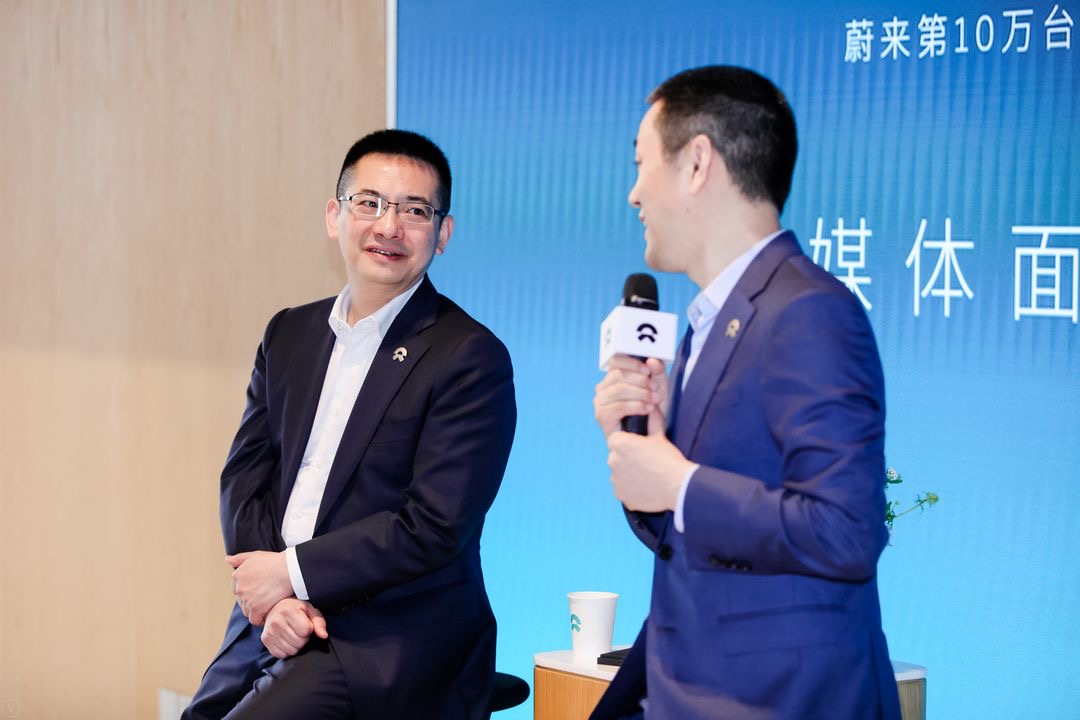
Q8: Now that NIO’s funding has recovered and its volume is increasing, has the algorithm team resumed and what are the plans for the future? Secondly, NIO currently holds a large market share in the high-end market. Is it possible to target the sinking market in the future?
Li Bin: We started to accelerate R&D input last year. We will definitely continue to increase investment in full-stack R&D. This is strongly supported by the board of directors this year, and we will have a significant increase in R&D expenditure compared to last year.
The recruitment of high-end talents is an important task this year. We have been recruiting high-end R&D talents since last year, and the progress is good.
In addition, we will increase investment in infrastructure, battery swapping stations, and service centers, which are also important internal goals this year.
As for more popular brands, we want to do it if we can. We have made some attempts in the past few years, but they are definitely not thorough. Now we are thinking more long-term, and we will do it if everyone thinks we need to. The NIO brand will not drop to a very low point, and will maintain its positioning in the high-end market. This is also an objective law of automotive products. If we do it, we need to do it as a very independent brand.
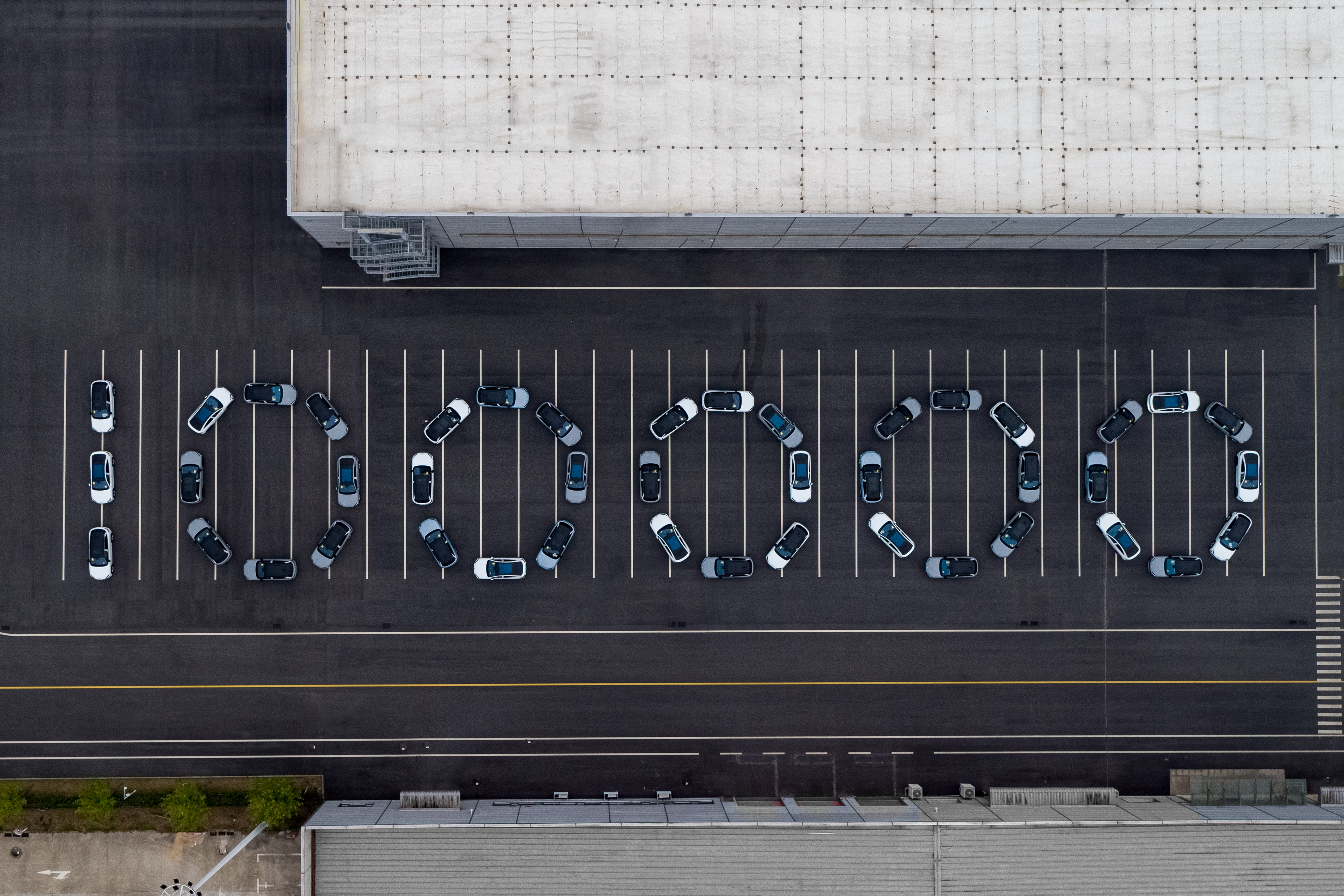
Q9: The industry is now discussing the fourth entrepreneurship of China’s automotive industry, with intelligent electric vehicles at its core. What is NIO’s view on the fourth entrepreneurship? As for NIO’s going global situation, how to deal with user recognition and the issue of recognition of Chinese brands?
Qin Lihong: China’s automobile industry has been around for nearly 70 years, and we have seen four waves of innovation. The first wave was in the 1950s, from nothing to having cars. It was very difficult, and the representative products were Jiefang and Hongqi. Hongqi is a brand that all Chinese people have emotions about because it is the same as the Republic.
The second wave was shortly after the opening up and reform policy, mainly joint ventures with foreigners and the market exchanging technology. It brought new products, new technologies, and the world’s top supply chain and talents to China. The representative was SAIC Volkswagen and the representative product was Santana, which was in 1984.
The third wave is the mainstream of China’s own brand, which was started by white entrepreneurs or private or state-owned enterprises, and played a very important role in popularizing family cars in China, bringing space to family cars.The fourth wave of the automobile industry started a few years ago, and we are still in the process of sorting through the sands, it has not yet passed. This round of wave is dominated by intelligent electric vehicles as the main product feature. The holistic user service is an important factor beyond the consideration of manufacturing cars. It has mobile internet genes and looks towards the global wave. We believe that intelligence, globalization, and high-end features may be the most important characteristics of this round of wave. At present, we think NIO can be regarded as a representative in this regard. Understanding the four waves helps us review the 70-year history of the entire automotive industry and helps us see the direction of the next wave, and have a better understanding. Why do so many great new technology companies want to enter the automotive field? They don’t just make a car. This wave of the industry cannot be missed.
Li Bin: As a young enterprise, we are very lucky to live in the best era. The three words “intelligent electric vehicles” represent the industrial foundation. I think China is indeed the best country in the world to start a business on intelligent electric vehicles. Whether it is intelligent, electric, or automobile, there is no second country better than China in terms of supply chain foundation, talent foundation, and market foundation. We are very fortunate.
In such an era, can we set higher goals and provide good products and services to users around the world as a representative enterprise? When we created this company in 2015, we aspired to be a global brand. NIO’s Shanghai team synchronized with Europe and the United States to establish a team. So NIO is actually different from many Chinese companies. Not just in the automotive industry, we were born to be a company with a global gene. At the beginning, we knew how to manage a global team with different cultures and backgrounds. In 2015, our team came from more than 40 countries. Why do people feel that NIO is a little different from other companies? It is indeed different. We are a Chinese company but also a company with a global gene. In 2019, during the worst time, we did not close our European office. For us, this meant bearing more expenses, but we think this investment is worthwhile. Therefore, our plan to enter the global market did not begin today, but six years ago. For example, in 2017, we started to discuss the plan for the US market, which is still under discussion after four years, not because we are slow, but because we know that a Chinese company in a global market has greater pressure, especially under the current international political background. We need to make others trust us and need to make extra effort to do things right. The best products and services are given at the beginning, with no second chance. So, the pressure is high.However, China is very open to products from all over the world. Tesla’s success today is inseparable from the support of Chinese users. When we go to Europe, we do not expect it to be as smooth as in China. We have to be prepared mentally and it is a tough decision, but someone has to do it. Who can do it if not NIO? We must certainly take on greater risks. If we can pave the way, it will be easier for other brands of intelligent electric vehicles in the future. This is what we need to do.
Q10: What is your assessment of your new car product development work?
Li Bin: In fact, the past five years have been a period of growth. In terms of understanding of the products and technology of intelligent electric vehicles, there has been significant progress compared to six years ago. Six years ago, we thought about many things from a user experience perspective, such as battery swapping and charging systems, and we had many innovations. But we still define products from the perspective of product experience and user experience. I think this can be achieved.
Today, we are really thinking about more long-term things from the perspective of technological trends. We think about where the boundaries are, which are the core values of users from a technological product perspective. This trade-off is stronger than before, which is the place where we have progressed.
Our main work should still be in research and development. The first is to find people, the second is the technology roadmap and direction, what should happen in ten years, what should happen in five years, and how to connect them in the future. The third is to define products from the perspective of users, where are the user value points. I mainly do these three things in research and development.
Q11: Are there any quantifiable standards for user-oriented enterprises, regardless of organizational structure, digital marketing, or basic logic?
Qin Lihong: This topic is very large, and everyone is trying to quantify the results. Is the superficial thing digitalized or the management system and organization? Honestly, the only starting point for a user enterprise is whether you really want to do it. If you really want to do it, there are no technical difficulties, no internet, or digital systems, it is an ideological thing for an enterprise. Technology, organization, and processes will support it. Li Bin has been debating with many colleagues within the company on a question, whether making users satisfied is a means for the enterprise to increase profit, or is it the ultimate goal of our enterprise’s existence. We want to improve the company’s business level, improve the company’s profitability, and improve the company’s accumulation, all for better serving users. This will eventually be reflected in indicators, which is the long-term comprehensive maximization of user satisfaction. But I personally think that there will be various methods, and the outside world has deified NIO’s services at this time. We think that the services we provide are not good, and we have not reached what we should achieve.
Everyone thinks we are doing great, but I think we need to collectively reflect on whether the industry’s service to users is too poor, which is not a victory. NIO is willing to work with industry peers to improve the service of the automotive industry.### Q12: Does NIO have any risk by having only one supplier? How does it ensure the safety of the supply chain? Has it considered cooperating with other battery manufacturers?
Li Bin: From NIO’s perspective, it may be the safest approach for us to have in-depth cooperation with industry-leading companies such as CATL at this stage. Different stages have different strategies; in the long run, I believe that all intelligent electric vehicle companies will have their own accumulation of battery-related technologies.
At the beginning, NIO developed and produced batteries on our own. Our close collaboration with CATL does not mean that we have not grown our own capabilities in battery technology R&D. As you may know, our battery safety performance has been excellent in the past two years, which relies on big data and intelligent battery management. I believe that NIO is leading in this field globally, and we are working to accumulate battery technology and capabilities from various perspectives. In the near future, working with CATL is undoubtedly a win-win, and we will further deepen our cooperation.
This article is a translation by ChatGPT of a Chinese report from 42HOW. If you have any questions about it, please email bd@42how.com.
